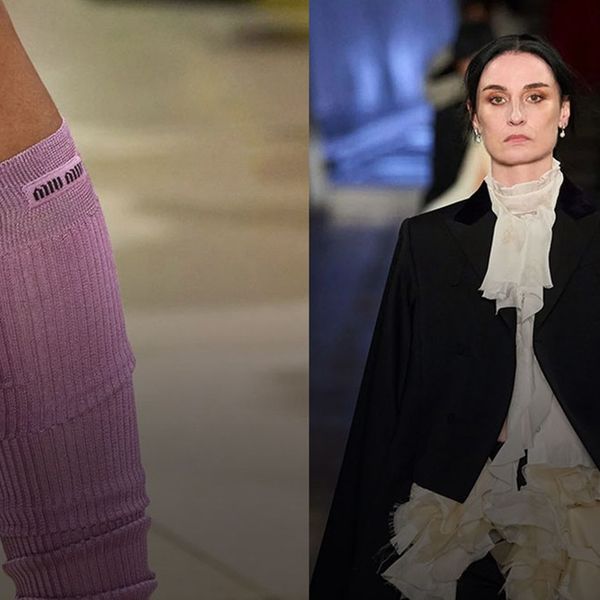The Ultimate Skin-Care Hack Is Layering Your Laser Treatments
It's a simple way to maximize the benefits and minimize any downtime.

Laser treatments are popular for a variety of skin goals. These services include everything from boosting collagen production and smoothing fine lines to treating hyperpigmentation and skin tightening. Scheduling these in-office skin treatments is tricky, though. They usually involve some sort of downtime, meaning your skin could go through a stressful period where it's red, flaky, and rough. That's exactly why it's becoming so popular now to layer multiple treatments into single sessions—you'll reap better results overall, while also minimizing any potential disruption to your schedule. "Layering treatments, also known as combination therapy, can be a powerful method to maximize benefits, minimize adverse effects, and even save time for clients," says Sam Pang, an aesthetic nurse practitioner at SkinSpirit.
Dr. Julius Few, a board-certified plastic surgeon, considers these interwoven, non-surgical treatment combinations to be "the future of aesthetics." He calls them "Stackable Treatments," a term he coined that calls out their synergistic and complementary usage. "By layering innovative peels, injectables, laser treatments, ultrasound technology, and advanced skin care, the 'Stackable Treatment' approach simultaneously targets the three major components of aging: skin wrinkling, loss of volume, and sagging," Dr. Few tells Coveteur.
"You're already going to be down once, so let's go ahead and take advantage of the downtime and enhance the effect of all the treatments," reasons Dr. Corey L. Hartman, a board-certified dermatologist. "As long as we're not doing anything that will be detrimental to the other treatment or too aggressive [for the skin], we know that we're going to get an added benefit from the synergy of different technologies used at one time." This might mean opting for microneedling, which promotes collagen production in the skin, alongside radiofrequency, which tightens the skin by stimulating elastin production.
Ahead, we speak to skin-care experts in order to break down four of the best layering treatments that'll have the greatest impact on your skin.
Clear and Brilliant + Microneedling with PRP
"My favorite treatments to layer at the same visit are Fraxel or Clear and Brilliant, PRP injections, and microneedling," says Pang. "This combination boosts collagen, improves the look of fine lines, pores, [and] pigmentation, and gives the skin a healthy glow."
Lasers, like Clear + Brilliant, create tiny channels in your skin that allows topical products, like your serums and moisturizers, to penetrate deep into your skin, says Dr. Hartman. "That's why it's an ideal time to apply PRP," he adds. "We know PRP is great for stimulating the growth of collagen and elastin. When we enhance that effect and get it deeper in the skin, we know we will get a more robust effect." Also—there are two forms of the Clear + Brilliant laser. If decreasing the appearance of hyperpigmentation is a skin goal for you, be sure to seek out the Clear + Brilliant Permea.
The microneedling promotes "maximum collagen stimulation with reduced risk of post-inflammatory hyperpigmentation while being safe for all skin types," according to Pang. This combined therapy is ideal for rejuvenation and maintenance, and the downtime isn't bad—you should be fully healed in five days or less.
For a more aggressive treatment to address deeper creases, smooth out rough texture, or to treat acne scars, consider leveling up to the Fraxel laser. "When treating acne scars or deeper wrinkles, I like to combine Fraxel with microneedling," says Pang. "This allows for an aggressive treatment with a reduced risk of negative outcomes." She adds that downtime will include two to four days of intense redness and swelling, with lingering pinkness for roughly 12 days.
BBL Hero or BBL Halo + Radiofrequency + Microneedling
When it comes to removing pigment, tightening the skin, and promoting collagen, Dr. Emer's Signature Bright and Tight uses a radiofrequency and microneedling device to stimulate collagen above and below the surface of the skin. This is followed up with the BBL Hero by Sciton; it's an intense pulsed light (IPL) treatment that treats surface-level pigmentation from sun damage, so it's ideal for eliminating unwanted browns and reds in the skin. Plus, the BBL Halo treatment can be used to smooth texture and fade acne scars.
After this treatment, PRP is applied like a serum to the skin in order to promote healing and reduce inflammation. Oh, and also—if you're thinking about trying out this treatment combination, it's important to keep in mind that IPL treatments aren't recommended for people with melasma or those with deeper skin tones.
PicoSure by Cynosure + PRP
"For melasma, pairing a PicoSure laser with PRP, and then following up with a good topical regimen in between treatments, is a great way to manage it," Dr. Hartman says. Because of melasma's risk of being triggered by heat, you may want to avoid IPL treatments, Fraxel, and Clear + Brilliant. PicoSure is the only laser with FDA approval to treat melasma because there's a smaller chance that heat or light will negatively affect your skin.
"We have also been experimenting more with microneedling," says Dr. Hartman. "It might be beneficial for treating melasma; there's been an increase in the number of studies that are beginning to look at the effectiveness of microneedling." He also notes that microneedling has helped to bring color back from hypopigmentation, aka the loss of pigment due to sun damage or tattoo removal.
Tri-L for Anti-aging
According to Dr. Ben Talei, a board-certified plastic surgeon, he's seen the most significant skin improvements from the Tri-L treatment. It's a combination of a radiofrequency skin-tightening treatment, laser resurfacing, and plasma therapy, he explains. This trio of treatments works on the deepest layers of your skin, as well as its surface, to address lines, wrinkles, and pigmentation.
Towards the end of the procedure, your blood is drawn and fat is taken from under the skin on your abdomen to create a serum that's then injected back into your skin, several layers deep, explains Dr. Talei. Tri-L definitely isn't for the faint of heart and it requires a bit more TLC post-procedure than other treatment combinations (the CO2 laser alone requires up to 10 days of downtime.) However, according to Dr. Talei, after three months, you'll notice tighter skin along with improvements in pigment and texture.
Are Layering Treatments for You?
"It's important to remember that not every treatment can be combined," Pang says. However, when the right treatments come together, they can help treat an array of specific skin goals. Depending on your skin tone, type, diagnosis, and desired outcomes, your aesthetic nurse, dermatologist, or plastic surgeon will be able to recommend the appropriate course of treatment for you.
It's also important to remember that taking care of your post-laser skin-care routine matters as well. The regimen that you follow at home long after your sessions have ended is what will determine the long-term success of your treatments. (And, yes, that includes being diligent with your applying, and re-applying, sun protection.) But for devoted skin-care lovers, the efforts they take are undeniably worth it.
Top photo: Courtesy of SkinSpirit
Want more stories like this?
How Concerned Should You Be about Contaminants in Your Beauty Products?
This Brand Uses an At-Home Spit Test to Target Your Skin's Needs
Meet the Superfruit Giving Retinol a Run for Its Money




